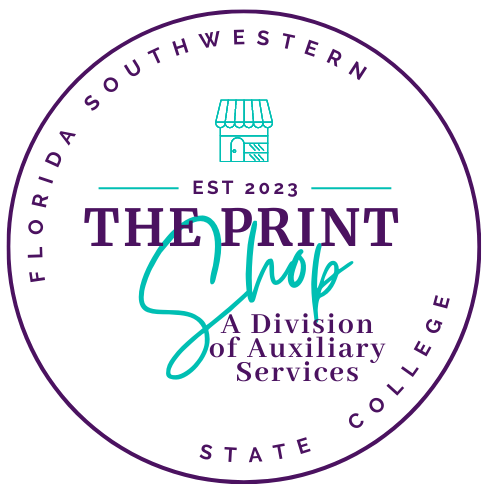From File to Frame: The Printing Journey at a Print Shop Near Me
From File to Frame: The Printing Journey at a Print Shop Near Me
Blog Article
The Ultimate Guide to Making Use Of Printing Providers for Custom Art Prints
Steering through the globe of personalized art prints requires a clear understanding of various printing solutions. Artists have to consider factors such as printing techniques and products to achieve the wanted outcome. Each choice, from artwork prep work to shade calibration, plays a crucial duty in the end product. As they discover these aspects, musicians can reveal the potential for their work to link with target markets in a meaningful method. What actions can they require to guarantee their prints stick out?
Understanding Different Kinds of Printing Providers
Although many people may ignore the complexities of printing solutions, understanding the numerous types readily available is important for anyone seeking to develop custom-made art prints. The most usual kinds consist of electronic printing, counter printing, and display printing. Digital printing is preferred for its fast turnaround and capability to generate top quality photos straight from electronic data, making it optimal for tiny runs. In contrast, balanced out printing offers exceptional picture high quality and is cost-effective for bigger amounts, making use of plates to transfer ink onto paper. Display printing, commonly used for textiles and marketing items, includes pressing ink with a mesh screen, allowing for vivid shades and structures. Each method has its one-of-a-kind advantages and constraints, making it important for artists and designers to examine their certain demands, such as amount, preferred high quality, and budget, prior to choosing a printing solution that lines up with their creative vision.
Picking the Right Materials for Your Prints
Choosing the proper products is important for accomplishing high-grade custom-made art prints. Understanding the various kinds of paper and the value of ink high quality can considerably influence the final outcome. Musicians need to think about these variables to guarantee their vision is properly represented in the printed piece.
Paper Types Explained
Selecting the right paper kind is essential for accomplishing the wanted visual and longevity in customized art prints. Various choices exist, each offering distinct attributes. For instance, shiny paper enhances shade vibrancy and information, making it perfect for digital photography prints. On the other hand, matte paper provides a softer finish, which is more suitable for art work that needs nuance and texture. Art paper, frequently made from cotton or alpha cellulose, supplies archival high quality and appropriates for replicating intricate details in paints (Print Shop Near Me). In addition, specialized documents, such as watercolor or canvas, can include one-of-a-kind aesthetic impacts. Eventually, picking the suitable paper kind will considerably affect the final presentation, ensuring that the art work is both lasting and visually enticing
Ink Quality Matters
Ink top quality plays an important function in the overall success of custom-made art prints. High-quality inks ensure dynamic colors, sharp information, and durability, which are crucial for showcasing creative work. When picking printing services, artists need to take into consideration pigment-based inks over dye-based options, as they supply better fade resistance and color security. Furthermore, the option of ink ought to match the picked paper type, enhancing the print's aesthetic effect. Ecological aspects, such as moisture and temperature level, can likewise affect ink performance; for that reason, artists must ask about ink formulations that stand up to these aspects. Eventually, investing in premium ink top quality can boost the end product, assuring that the art print remains true to the musician's vision for years ahead.
Exploring Printing Techniques: Digital vs. Typical
While both typical and digital printing techniques have their one-of-a-kind benefits, the choice on which technique to utilize often depends upon the certain needs of the art work. Digital printing stands out in flexibility and speed, enabling fast turn-around times and the ability to publish as needed. This approach is particularly advantageous for musicians that call for one-of-a-kind pieces or tiny runs, as it gets rid of the need for substantial setup processes.Conversely, standard printing techniques, such as lithography and display printing, typically produce richer shades and structures, interesting artists looking for an extra responsive and genuine surface. These approaches can enhance the deepness and quality of the artwork, making them suitable for bigger editions. Furthermore, conventional approaches might provide a distinctive aesthetic that digital printing in some cases has a hard time to replicate. Inevitably, the choice in between these methods ought to think about elements like preferred top quality, amount, and imaginative intent, directing musicians to one of the most suitable choice for their projects.

Preparing Your Artwork for Printing
Effectively preparing art work for printing needs mindful focus to information, no matter the selected printing method. Artists must assure that their data are created at the appropriate resolution, generally 300 DPI, to maintain intensity and clarity. The right color mode, usually CMYK for print, is important to accomplish the wanted shade accuracy. Artists should also consider the dimensions of the artwork, ensuring to consist of hemorrhage areas if required, to stop any type of undesirable white sides after trimming.Additionally, data styles play a crucial duty; TIFF and PDF are typically liked for top notch prints. Prior to submission, it's crucial to examine the artwork for any type of flaws or unwanted aspects. By diligently checking these facets, musicians can improve the probability of their prints lining up with their creative vision, ultimately leading to an effective printing outcome.
The Significance of Color Calibration and Proofing
Color calibration and proofing are important steps in the printing process, as they guarantee that the last output accurately shows the artist's vision. Correct color calibration warranties that the shades presented on the display suit those that will certainly be printed. This procedure involves readjusting the monitor settings, printer accounts, and inks to attain a constant color representation.Additionally, proofing permits musicians to preview their job before the final print run. This phase enables them to identify and remedy any kind of discrepancies in detail, shade, or saturation, thus decreasing costly mistakes. By utilizing hard-copy or digital proofs, artists can make informed choices concerning modifications required for perfect results.Incorporating color calibration and proofing right into the printing process not only enhances the top quality of the final product but likewise fosters a trusted collaboration in between the printing and the musician service, assuring contentment and fidelity to the original art work.
Choosing the Perfect Dimension and Format for Your Prints

Advertising and Marketing Your Personalized Art Prints
Marketing and marketing customized art prints requires a solid brand name identification to stand see it here apart in a competitive market. Reliable on the internet promo strategies and the strategic use social media sites platforms can greatly boost presence and involvement. By integrating these aspects, musicians can develop an engaging visibility that brings in possible buyers.
Building Your Brand Identification
Developing a strong brand name identity is important for artists seeking to efficiently market and sell their custom art prints. This identification incorporates the artist's distinct design, worths, and tale, which reverberate with potential customers. Artists need to produce a cohesive visual visibility across all platforms, including logos, color pattern, and typography that reflect their creative vision. Additionally, a clear mission statement assists interact the artist's function and interest. Engaging storytelling concerning the motivation behind each item can cultivate emotional links with the audience. Uniformity in messaging, whether on social media sites or packaging, improves recognition and count on. By thoroughly curating their brand identification, artists can distinguish themselves in an affordable market, bring in loyal consumers who appreciate their artistry.
Effective Online Promotion Strategies
What approaches can musicians use to properly advertise their personalized art publishes online? Developing an expert site showcasing the artwork is important. This site must include top quality pictures and thorough summaries to involve prospective buyers. Additionally, artists can utilize email marketing by constructing a subscriber listing to share updates, promotions, and new launches. Working together with blog owners and influencers in the art neighborhood can increase reach and reliability. Using exclusive items or limited-time price cuts can also develop seriousness, encouraging purchases. Maximizing web content for search engines with appropriate keyword phrases will improve visibility. Finally, keeping a blog regarding the imaginative procedure can bring in art lovers, promoting a much deeper connection with the audience and boosting the total marketing strategy.
Using Social Network Platforms
Social media platforms serve as effective tools for musicians wanting to market and offer their personalized art prints. By leveraging systems like Instagram, Facebook, and Pinterest, artists can showcase their work to a large target market. Engaging visuals and strategic hashtags can increase visibility, attracting potential purchasers to their profiles. On a regular basis posting web content, such as new styles or behind-the-scenes processes, helps preserve target market rate of interest and promotes a sense of neighborhood. In addition, musicians can make use of targeted advertising and marketing to get to particular demographics, enhancing the chances of sales. Cooperations with influencers or various other musicians can additionally enhance exposure. Ultimately, a well-curated social networks existence not only advertises personalized art prints but additionally builds a loyal consumer base over time.
Frequently Asked Inquiries

Exactly how Do I Locate Reliable Printing Expert?
To locate trustworthy printing click to find out more service companies, one must research on the internet reviews, look for suggestions from peers, contrast profiles, request samples, and assess customer care responsiveness. This extensive strategy warranties educated decisions and have a peek at this website satisfying results.
What Is the Regular Turnaround Time for Personalized Prints?
The typical turnaround time for customized prints differs by supplier, yet typically ranges from a couple of days to 2 weeks. Factors affecting this consist of order size, intricacy, and the certain printing techniques used.
Can I Get a Refund if I'm Not Completely satisfied With My Prints?
The inquiry of obtaining a reimbursement for unsuitable prints often depends upon the particular printing service's policies. Numerous firms offer contentment assurances, while others might have stringent return problems, highlighting the relevance of assessing terms ahead of time.
Are There Any Type Of Hidden Prices Related To Printing Providers?
Numerous printing services might include hidden prices such as configuration charges, delivery fees, or extra costs for details products. It's vital for consumers to ask about all potential costs before finalizing their order.
How Can I Guarantee My Prints Are Environmentally Friendly?
To guarantee prints are eco-friendly, one should choose eco-friendly inks, recycled paper, and lasting printing methods. Researching printing solutions that prioritize sustainability and acquiring qualifications can further guarantee marginal ecological impact in the printing procedure. Guiding with the globe of customized art prints requires a clear understanding of numerous printing services. Numerous people may neglect the complexities of printing solutions, comprehending the various kinds readily available is vital for anyone looking to create customized art prints. The most common types consist of digital printing, balance out printing, and screen printing. Effectively preparing art work for printing requires careful interest to detail, no matter of the selected printing technique. Prints aimed at galleries might require basic dimensions to facilitate framing, whereas distinct styles may appeal to collection agencies looking for something distinctive.Lastly, the printing solution's abilities need to be evaluated.
Report this page